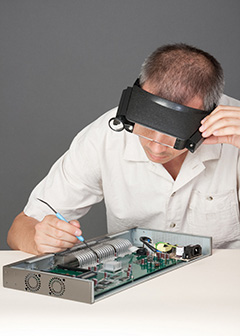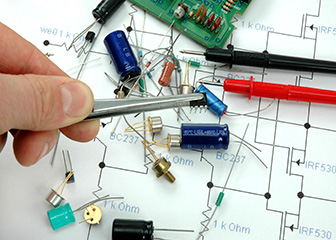Summary

| Quick Facts: Electrical and Electronic Engineering Technicians | |
|---|---|
|
$56,040 per year
$26.94 per hour |
|
| Associate’s degree | |
| None | |
| None | |
| 151,100 | |
| 2% (Little or no change) | |
| 2,900 | |
What Electrical and Electronic Engineering Technicians Do
Electrical and electronic engineering technicians help engineers design and develop computers, communications equipment, medical monitoring devices, navigational equipment, and other electrical and electronic equipment. They often work in product evaluation and testing, using measuring and diagnostic devices to adjust, test, and repair equipment.
Work Environment
Electrical and electronic engineering technicians work closely with electrical engineers. They work primarily in manufacturing settings, research and development laboratories, and utilities.
How to Become an Electrical or Electronic Engineering Technician
Electrical and electronic engineering technicians typically need an associate’s degree.
Pay
The median annual wage of electrical and electronic engineering technicians was $56,040 in May 2010.
Job Outlook
Employment of electrical and electronic engineering technicians is expected to 2 percent from 2010 to 2020, resulting in little or no change for this occupation. These technicians work in manufacturing industries, which are growing slowly. The federal government also employs a large number of electrical and electronic engineering technicians.
Similar Occupations
Compare the job duties, education, job growth, and pay of electrical and electronic engineering technicians with similar occupations.
O*NET
O*NET provides comprehensive information on key characteristics of workers and occupations.
Contacts for More Information
Learn more about electrical and electronic engineering technicians by contacting these additional resources.







